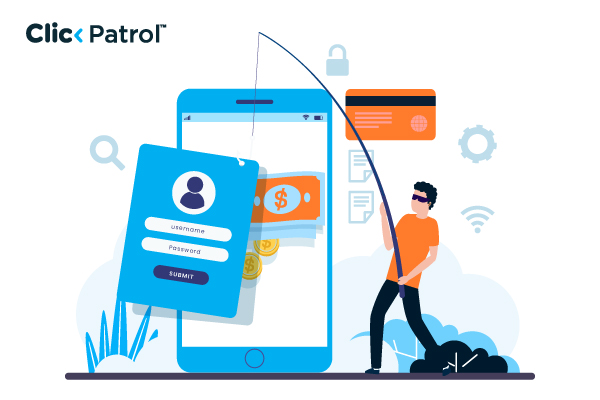Instagram spam describes any persistent and unwanted deceptive conduct that exploits platform algorithms or tricks users into responding.
Instagram Spam Explained: How to Detect, Prevent, and Protect Your Account
Abisola Tanzako | Mar 14, 2025

Table of Contents
- Instagram Spam: What it is and why you should care
- Common characteristics of Instagram spam
- Common types of Instagram spam and their risk levels
- Fake followers & engagement bots
- Spam comments & mass tagging
- DM scams & phishing links
- Instagram giveaways & crypto scams
- Fake job offers & sponsorships
- Instagram story & hashtag spam
- How to report and remove Instagram spam efficiently
- Why does Instagram spam exist?
- How Instagram spam affects users
- How Instagram fights spam
- Automated spam detection: Instagram employs AI to detect and remove spam
- Account verification & suspensions: Instagram implements various enforcement actions
- User reporting & moderation: Users can take action against spam by
- How to protect yourself from Instagram spam
- Empowering your Instagram journey: Stay safe, stay informed
According to Meta, over 95% of spam content on Instagram is proactively removed by AI before users see it. However, millions worldwide still face continuous challenges due to Instagram spam.
Spammers exploit Instagram’s algorithms to spread false content, harming user accounts and business profiles. Understanding how Instagram spam works and its security threats allows you to better protect your account while maintaining a safe online experience.
This guide explains different types of Instagram spam, their risks, and best practices for protection.
Instagram Spam: What it is and why you should care
Instagram spam is any unwanted, repetitive, or deceptive activity that manipulates Instagram’s algorithms or deceives users into engaging.
Ghost Data’s research revealed that bots represent 10% of Instagram users, with about 95 million bots listed as active accounts. In 2021, monthly Instagram users surpassed 2 billion, establishing this platform as a favored target for spammers conducting fraudulent activities.
Common characteristics of Instagram spam
Common characteristics of Instagram spam include:
- Mass messaging or commenting: Users who send identical text messages or post the same content to multiple users or posts are affected by mass messaging or commenting practices.
- Excessive follows/unfollows: Users who perform rapid follow-and-unfollow operations try to boost their visibility through this method.
- Fake engagement occurs when bots generate false likes and comments, and create fake followers to artificially inflate user popularity.
- Suspicious links: Network spammers distribute dangerous phishing website addresses and malware through the links in their messages.
Common types of Instagram spam and their risk levels
Here are Instagram spam types, their characteristics, and risk levels:
Fake followers & engagement bots
- Bots inflate follower counts and engagement metrics.
- Instagram regularly removes fake accounts.
- Risk level: Low
Spam comments & mass tagging
- Includes irrelevant or repetitive comments, excessive emojis, and mass tagging.
- Often used to promote scams.
- Risk level: Medium
DM scams & phishing links
- Messages contain fake giveaways, suspicious links, or verification scams.
- This can lead to account theft and data breaches.
- Risk level: High
Instagram giveaways & crypto scams
- Fake investment schemes and impersonation of celebrities/brands.
- Often, they require money or personal details to participate.
- Risk level: High
Fake job offers & sponsorships
- Messages promising fake jobs or sponsorship deals.
- Typically, it contains poor grammar and requests payments or sensitive data.
- Risk level: High
Instagram story & hashtag spam
- Stories or posts are overloaded with irrelevant hashtags and random user tags.
- Often linked to promotional scams.
- Risk level: Medium
How to report and remove Instagram spam efficiently
Dealing with Instagram spam is annoying, but deleting and reporting it efficiently helps keep the internet a safe place. The following describes how to report Instagram spam:
- Identify spam: Identify spam content, i.e., unwanted messages, accounts, or comments.
- Report the spam: Tap the three dots (•••) at the top right of the post, message, or profile. Tap “Report” and choose the reason for reporting, e.g., “It’s spam” or “It’s inappropriate.”
- Block the spammer: Blocking a spammer helps keep them out of your system in the future. Visit their profile, select the three dots, and tap “Block.”
- Delete spam comments: If you receive spam comments, swipe left on the comment, tap the trash can icon, and remove it.
Why does Instagram spam exist?
Instagram spam exists for the following reasons:
- The Instagram algorithm enables spammers to disseminate fake promotional content and phishing web addresses while offering services that boost engagement.
- Scammers exploit Instagram by selling counterfeit items, using deceptive schemes, and stealing account credentials to commit financial fraud.
- Numerous businesses and influencers utilize bots to artificially inflate their follower counts and comments.
- Some spammers obtain personal data by implementing phishing attacks as their data harvesting strategy.
How Instagram spam affects users
Instagram spam affects users through:
- Authentic audience engagement decreases because excessive spam-like activities obscure genuine interactions with the audience.
- Interacting with malicious links can result in account hacking, financial fraud, and data breaches.
- The regular occurrence of spam messages combined with fake promotional content creates distrust and annoyance within the Instagram platform. Engaging with Instagram spam comments made by bots has a tremendous impact on the credibility and following of influencers.
For example, in September 2022, Instagram’s highest mega-influencers lost 16.3 million followers within two weeks when the site deleted its spam accounts. Kim and Khloe Kardashian lost 2.4 million followers, while Selena Gomez lost 2.2 million.
How Instagram fights spam
Instagram fights spam in the following ways:
Automated spam detection: Instagram employs AI to detect and remove spam
- Identifies accounts engaging in rapid follow/unfollow patterns.
- Flags excessive comment repetition.
- Blocks suspicious accounts that send multiple direct messages in a short period.
Account verification & suspensions: Instagram implements various enforcement actions
- Temporary suspensions: Restrict liking, commenting, following/unfollowing, and messaging for a set period.
- Shadowbanning: Reduces visibility in search results, the Explore page, and hashtags.
- Permanent bans: Repeated spam violations can result in account deletion and potential IP blocking.
User reporting & moderation: Users can take action against spam by
- Blocking and reporting suspicious accounts.
- Enabling “Hide Offensive Comments” to filter out spam automatically.
- Screening DMs from unknown senders in the requests folder.
Despite these efforts, Instagram’s spam detection system is not foolproof. A third-party analysis estimates that Instagram’s false positive rate for spam detection is between 5% and 15%, meaning some genuine accounts may be mistakenly flagged.
How to protect yourself from Instagram spam
How to protect yourself from Instagram spam includes:
- Enable two-factor authentication (2FA): This provides an added layer of security to prevent unauthorized access.
- Do not click on dodgy links: If a comment or DM contains an unusual link, do not click it.
- Block & report spam accounts: Reporting fake accounts enables Instagram to remove them more quickly.
- Apply comment & DM filters: Instagram supports keyword filtering to filter out spam messages.
- Stay informed about Instagram’s policies: Staying current on Instagram’s policies frequently allows users to recognize and avoid new scamming methods.
Empowering your Instagram journey: Stay safe, stay informed
Protecting yourself from Instagram spam requires vigilance, awareness, and proactive security measures. You can maintain a safe and authentic online presence by understanding spammers’ tactics and leveraging Instagram’s anti-spam tools.
Utilizing Instagram’s anti-spam technology and adhering to best practices minimizes the risk of being targeted by spam. Over time, being watchful and taking appropriate precautions will make your experience on Instagram safer and more rewarding.
Protect your Instagram account, report spam, and enable security settings today!
Frequently Asked Questions
-
What is Instagram spam?
-
Which signs help me identify spam comments and direct messages through Instagram?
Spam comments often contain excessive emojis, repetitive phrases like “DM for collaboration,” and mass tagging.
Spam DMs frequently include fake offers, phishing links, and requests for sensitive information.
-
How does Instagram combat spam?
Instagram uses AI detection, account restrictions, shadowbanning, user reporting, and content moderation to reduce spam.
-
How do I prevent my account from being targeted by spammers?
- Set your account to private.
- Enable two-factor authentication.
- Avoid clicking suspicious links.
- Use strong passwords and update them regularly.
- Limit third-party app access.
- Report and block spam accounts.
-
What should I do if Instagram falsely flags my content as spam?
- Review Instagram’s guidelines.
- File an appeal through the provided process.
- Contact Instagram’s Help Center.
- Adjust future content to comply with Instagram’s policies.






